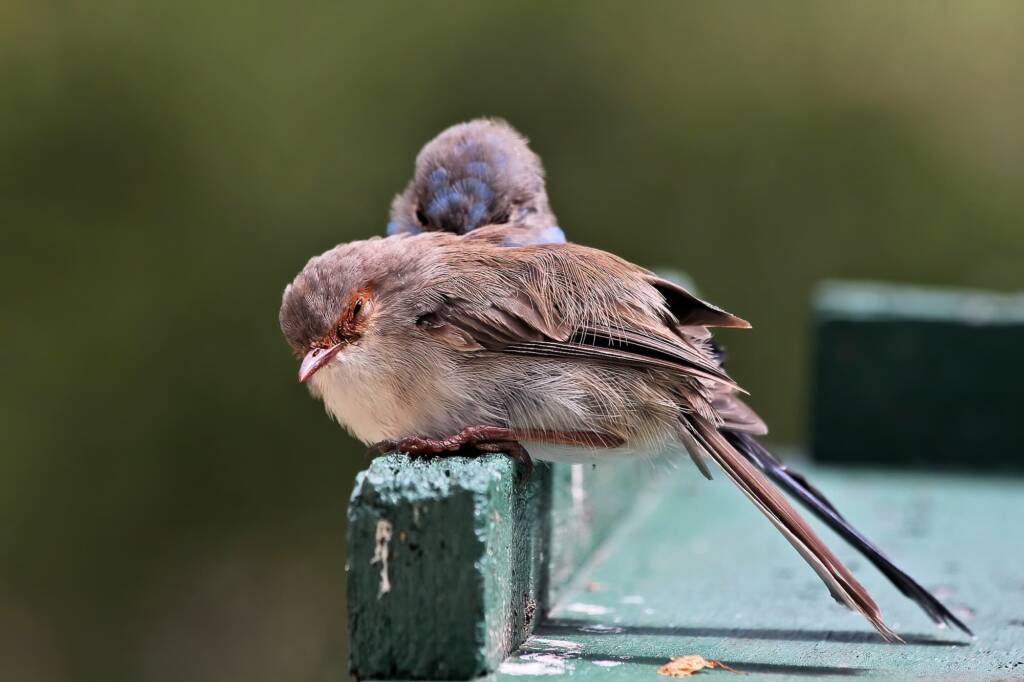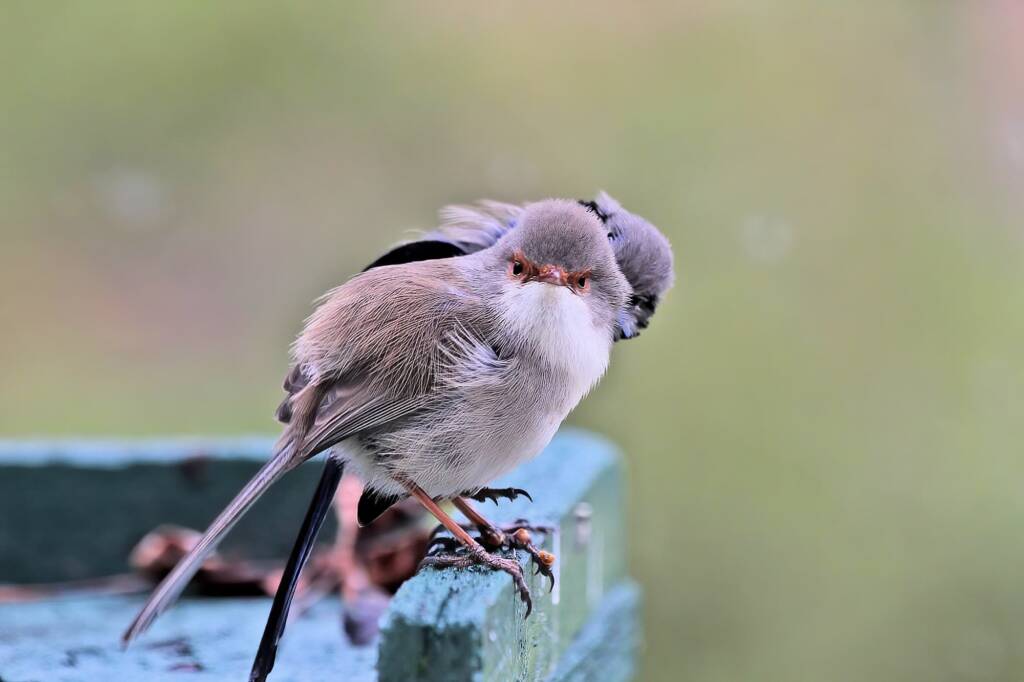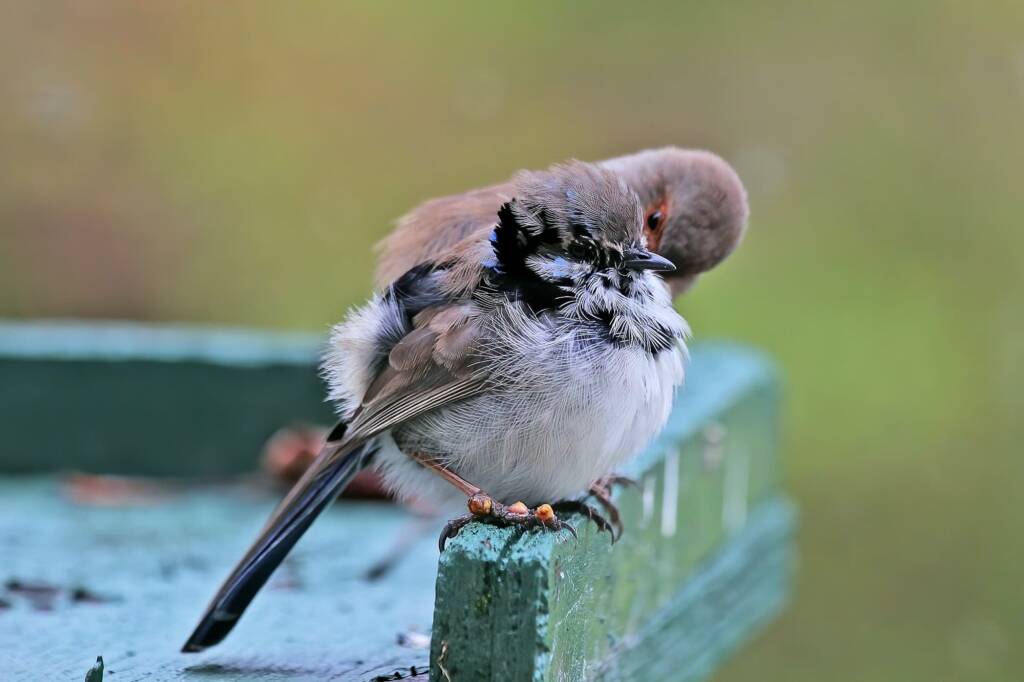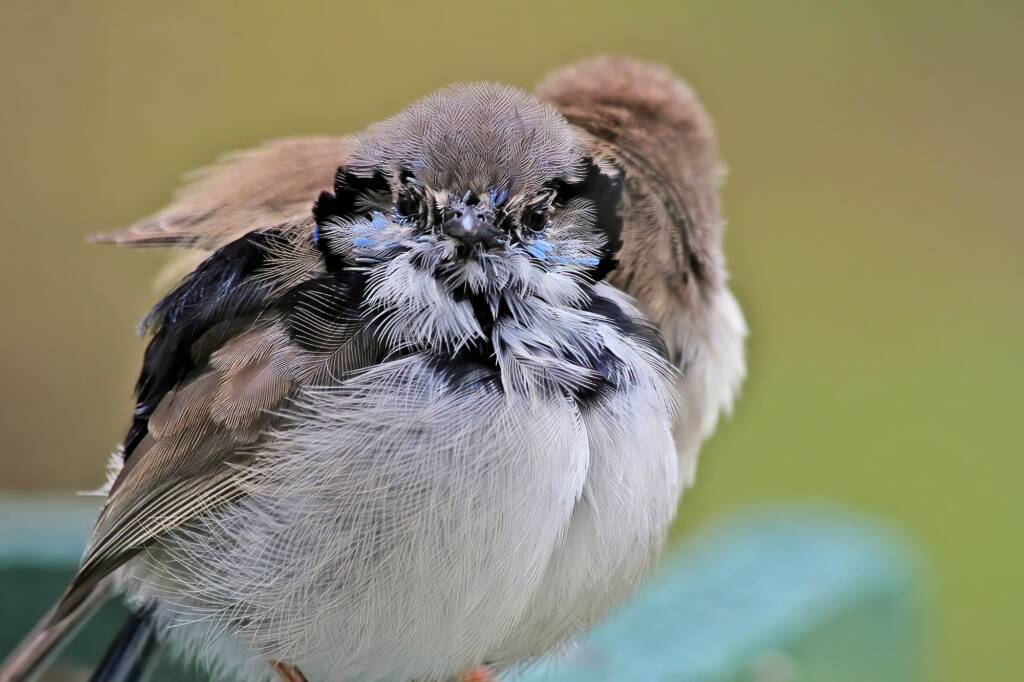Superb FairywrenEclipse plumage
When the mating season is over, the breeding males of the Superb Fairy-wrens (Malurus cyaneus) will moult their feathers, shedding their blue feathers for a plain grey-brown colour, in a process known as “eclipse”. The “eclipse plumage” may remain for up to eight months, whilst others may only be in the plain plumage for a few weeks.

During the moulting period, the male Superb Fairy-wren will look similar to the female of the species, as it loses the blue feathers in exchange for an ‘eclipse’ plumage. It is certainly rare for the male Superb Fairy-wren to moult from blue to blue. Most male Superb Fairy-wrens will moult twice in a year,


Check out the blog by Marc Newman… Will you still love me, when I lose my looks…
- Scientific classification
- Kingdom: Animalia
- Phylum: Chordata
- Subphylum: Vertebrata
- Informal: Gnathostomata
- Class: Aves
- Order: Passeriformes
- Suborder: Passeri
- Informal: Passerida
- Family: Maluridae
- Subfamily: Malurinae
- Genus: Malurus
- Subgenus: infrageneric Malurus
- Species: Malurus cyaneus
Footnote & References
- Photographs © Marc Newman, Flickr, https://flickr.com/photos/koolbee/albums
Superb FairywrenEclipse plumage
Australasian WrensDusky Grasswren Purple-backed Fairywren Red-backed Fairywren Southern Emu-wren Splendid Fairy-wren Superb Fairywren Variegated Fairywren White-winged Fairywren
BirdsApostlebird Australasian Darter Australasian Figbird Australasian Gannet Australasian Grebe Australasian Pipit Australasian Robins Australasian Shoveler (Spatula rhynchotis) Australasian Wrens Australian Babblers Australian Bustard Australian Chats Australian Magpie Australian Pelican Australian Pratincole (Stiltia isabella) Australian White Ibis Bassian Thrush Black-faced Cormorant Black-faced Woodswallow Black Swan Bowerbirds Brolga Brown Songlark Channel-billed Cuckoo Cinnamon Quail-thrush Cormorants Cuckooshrikes and Allies Dotterels Lapwings Plovers Doves & Pigeons Emu Fairy Martin Finches Grey Fantail Grey Teal Honeyeaters Kingfishers Little Friarbird Little Grassbird Magpie-lark Masked Woodswallow Noisy Pitta Olive Whistler Paradise Riflebird Pardalotes Parrots Pheasant Coucal Pied Butcherbird Rainbow Bee-eater Raptors Rufous Fantail Redthroat Rufous Bristlebird Silver-crowned Friarbird Torresian Crow Waders Welcome Swallow (Hirundo neoxena) Whiskered Tern (Chlidonias hybrida) White-browed Woodswallow White Capped Noddy White-faced Heron White-necked Heron Willie Wagtail Yellow-throated Scrubwren



